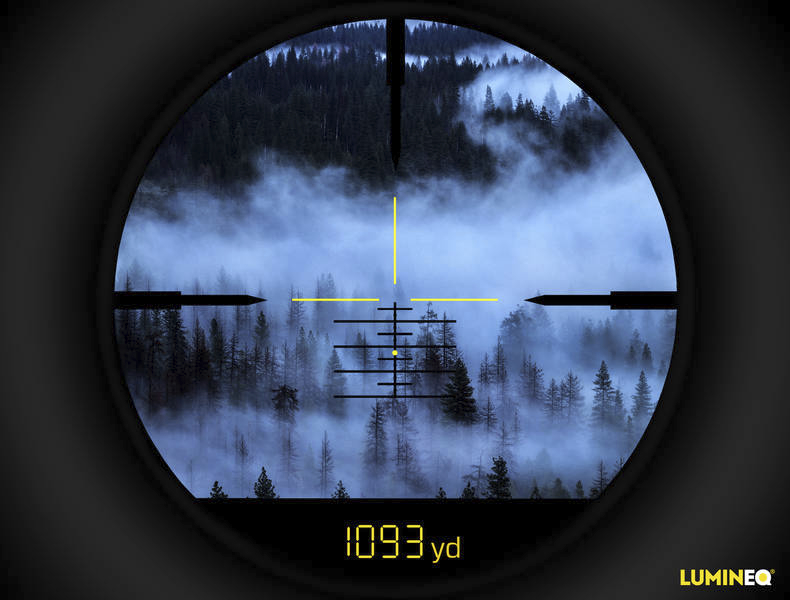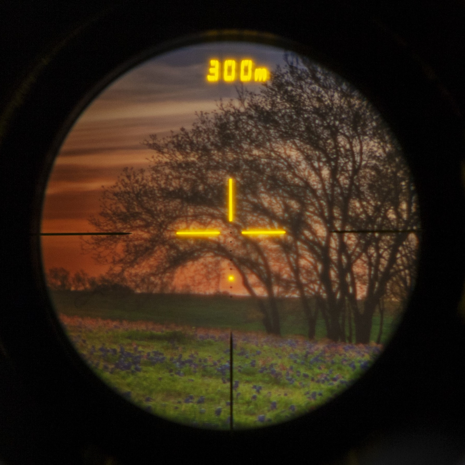A helicopter hovers over snow-capped mountains in the darkening night. The sound of the helicopter thrums through the air as the rescue pilot scans the terrain through his head-mounted night vision goggles. A few minutes later, a Recco signal was received and the location of the missing person was spotted. Meanwhile, all the crucial information appeared in his line of sight through the goggles, such as the distance to the target person, airspeed, and the latitude, which guided the pilot successfully to the direction for the rescue.
Is this a scene from a James Bond movie? No, this is the picture Beneq’s Lumineq Business Line Manager Jani Aho paints when asked about the possibilities of transparent displays on optical devices.
Digital information in the line of sight
According to Jani Aho, see-through displays can bring augmented reality (AR) to optical devices and elevate user experience and situational awareness to a whole new level. Aho describes transparent displays as a great addition to almost any optical device – from range finders, scopes and head-mounted displays to telescopes. And what exactly does this got to do with the snow-capped mountains and a helicopter in the night?
“Here’s the thing: transparent displays bring digital information in the line of sight, right where it’s most useful. Like in the case of the rescue mission described earlier. The AR is enabled with a display overlay on the night vision goggles lens system showing mission-critical information, such as heading, speed, attitude, location and distance to the target.” Aho explains enthusiastically.
“AR can make a huge difference. And there are so many possibilities. We can create microdisplays of almost any shape and size, as long as the display is flat. The Lumineq technology enables rich segmented display content and high-resolution micro matrixes with details up to 10 micrometers. This makes it possible for us to also create transparent microdisplays that can be used on magnifying optics.”
Picture of LUMINEQ ELT32S-Reticle Technology Demonstrator
Crystal clear displays - the Magic of Transparency®
Bringing information in the line of sight sounds like a great idea, but you can’t help but wonder if there is a risk of blocking the view with the display. Aho quickly puts your mind to rest: “You don’t have to worry about compromising field of view or transparency. Compared to transparent OLED (TOLED) and other display technologies, the performance of our displays is on a different level with glass-like transparency of near 90%. And you can always see through the lens system, even if you’re running low on battery or the display is not in use.”
According to Aho, transparent displays can also cut down device weight by transforming some of the mechanics to digital solutions thus simplifying the mechanical construction. This can drastically reduce weight for instance in high power rifle scopes by up to 1 kg. Another benefit is the low power consumption.
“Our transparent displays are built with emissive technology, where only the segments that are lit up use power. This means that the power consumption is as low as few milliwatts, depending on the lit area and the brightness,” Aho explains.
Reliable displays for extreme conditions
Let’s get back to the rescue missions in tough environments such as -60°C storming weather in the Arctic or sweltering conditions in the Amazon jungle. How does that transparent display cope with extreme conditions such as these?
“Our transparent and rugged displays are both based on the same thin film electroluminescent display technology. This inorganic, solid state display is made for tough environments – the glass can endure drastic temperatures, humidity, shock, and vibrations. The operating temperature is from -100°C to 105°C and the temperature doesn’t affect the lifetime or response time. The displays need neither heater nor cooler. We have not found a technology that is able to match that. And they definitely deliver in mountain rescue missions without problems,” Aho says without a trace of hesitation.
Nighttime causes no issues either, the Business Line Manager ensures. The brightness is adjustable from a few nits, or candela, to thousands according to different needs. Chrome and other functional layers can be added behind the light emitting layers for backup, enhanced brightness and blocking light if needed.
“With night vision goggles (NVG) you lose depth perception because you are looking through an electronic image. When you have to work with a reduced field of vision like this, getting critical information in the line of sight can compensate for those limitations.”
As a conclusion, Aho says that AR-enabled by transparent displays on optical devices improve usability, situational awareness, ergonomics, and overall user experience.
“I have no doubt in my mind that see-through displays open up a world of possibilities for new and enhanced optical applications.”
Interested in upgrading your scopes?
Lumineq displays are fully customizable to fit your needs. Contact us to request a demo or a quote. You can also read more about our display technology.


